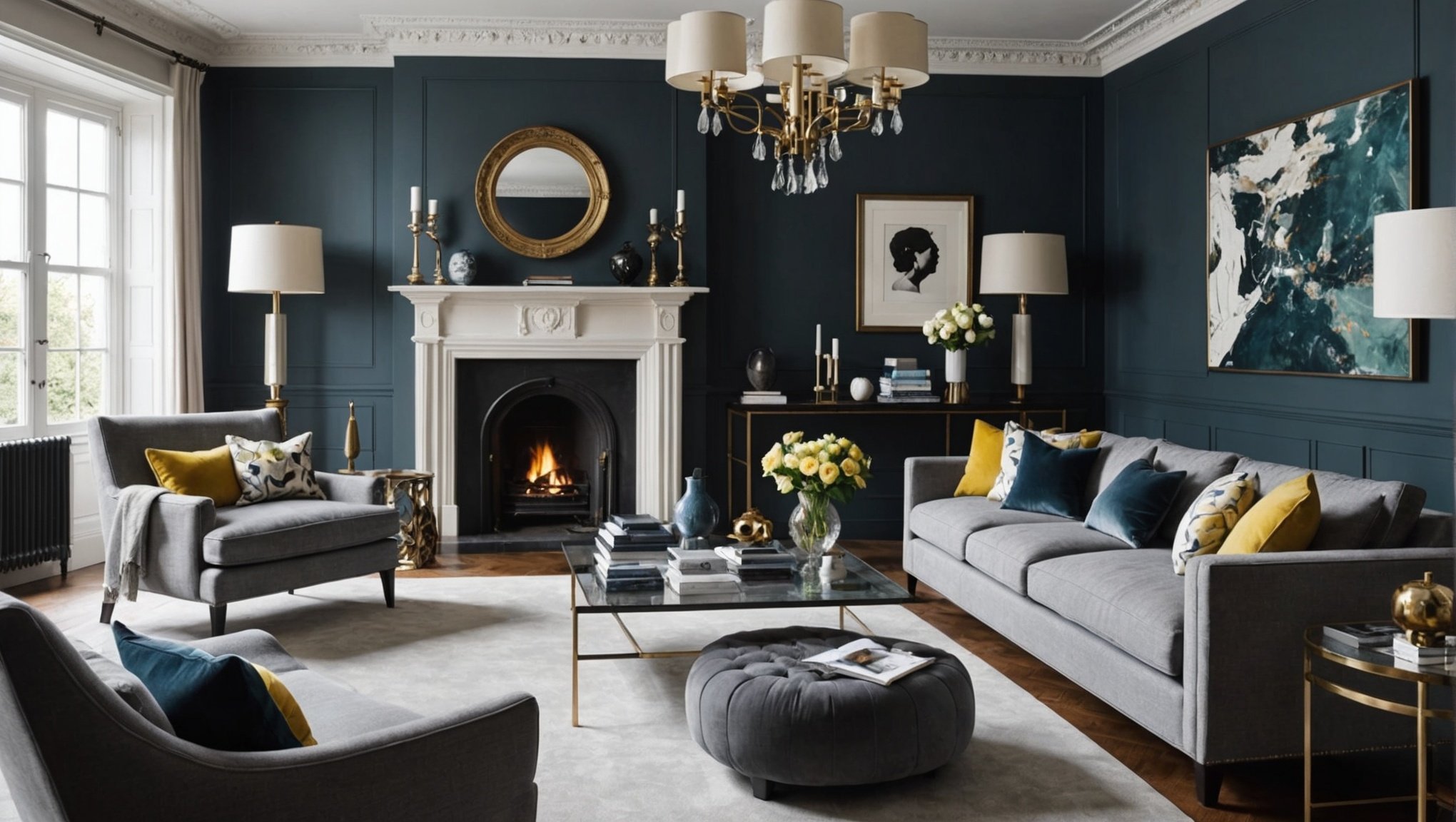Are you an interior designer in the UK looking to elevate your blog? Effective blogging can significantly enhance your visibility and engage potential clients. From sharing your design insights to showcasing your latest projects, every detail matters. This guide offers expert tips tailored to help you maximize your blogging strategy, ensuring your ideas resonate with your audience. Transform your passion for design into a powerful online presence that attracts and retains clients. Get ready to unlock the full potential of your interior design blog!
Understanding the UK Interior Design Blogging Landscape
The UK interior design blogging scene is a vibrant tapestry reflecting diverse styles and influences. With the UK’s rich history and eclectic culture, bloggers in this niche often draw inspiration from both traditional and contemporary design elements. This blogging landscape is shaped by key trends, such as sustainability, minimalism, and the integration of technology in home spaces. These trends not only reflect the evolving tastes of UK homeowners but also influence the content and style of interior design blogs.
Also to read : Maximizing Engagement: Top Strategies for UK Fitness Studios to Showcase Classes with Instagram Stories
In this industry, insights reveal that cultural context plays a crucial role in shaping blog content. UK bloggers often incorporate local traditions, historical references, and modern innovations, offering readers a unique perspective on design. The importance of cultural context in design blogging cannot be overstated, as it provides authenticity and relatability, which are essential for engaging an audience.
Additionally, the blogging landscape is influenced by social media platforms, where visual content thrives. Bloggers leverage these platforms to showcase their designs, reach wider audiences, and engage with followers. As such, understanding the nuances of the UK interior design blogging scene requires appreciating its blend of tradition, innovation, and cultural context.
In the same genre : Maximizing Community Engagement: Top Strategies for UK Gyms to Leverage Facebook Groups
Essential Blogging Strategies for Interior Design
In the realm of interior design, finding your unique voice and style is paramount. This not only sets you apart in the crowded blogging landscape but also helps in establishing a connection with your audience. Your blogging strategies should focus on identifying what makes your perspective distinct, whether it’s a specific design aesthetic or a unique approach to content creation.
Structuring your blog effectively is another crucial element. For design topics, consider organising content into categories such as room makeovers, DIY projects, or trend analyses. This structure allows readers to navigate your blog with ease, enhancing their experience and encouraging them to explore more.
Visual content plays a significant role in niche blogging for interior design. High-quality images and videos can captivate your audience, providing them with a tangible sense of your design ideas. Use platforms like Instagram and Pinterest to showcase your work, as these are ideal for visual storytelling.
Incorporating these strategies will not only enhance your blog’s engagement but also solidify your position as a trusted voice in the interior design community. By focusing on content creation that highlights your unique style and leveraging visual content, you can effectively reach and resonate with your target audience.
SEO Techniques to Boost Your Interior Design Blog
Enhancing your interior design blog with effective SEO can significantly increase its visibility. Start with keyword research tailored to the design niche. Identify terms that your audience frequently searches for, such as “modern interior design ideas” or “DIY home décor tips.” Using these keywords strategically within your content will improve your blog’s relevance to search engines.
Implementing on-page SEO best practices is crucial. Ensure that your blog posts are structured with clear headings, and include keywords naturally in your titles, subheadings, and body text. Meta descriptions should be concise and engaging, offering a snapshot of your content’s value. Additionally, optimize your images by using descriptive file names and alt texts, which can enhance your blog’s accessibility and searchability.
Building backlinks is another essential strategy. Collaborate with other bloggers or industry experts to guest post or exchange links. This not only improves your blog’s domain authority but also expands your reach to new audiences. Engaging with online communities and forums related to interior design can also provide opportunities for link-building. By focusing on these SEO techniques, your interior design blog can achieve greater search engine rankings and attract more readers.
Engaging Your Audience Through Interactive Content
To enhance audience engagement, incorporating interactive content is a powerful strategy. This approach not only captivates your readers but also fosters a deeper connection with them.
Start by utilizing polls and surveys to gather insights from your readers. These tools allow you to understand your audience’s preferences and interests, enabling you to tailor your content accordingly. By asking specific questions about design preferences or upcoming trends, you can make your readers feel valued and involved in your blog’s direction.
Creating design challenges and contests is another effective method to boost reader involvement. Invite your audience to participate in themed design challenges, where they can showcase their creativity and win prizes. This not only encourages engagement but also builds a sense of community among your readers.
Encouraging user-generated content and testimonials further enhances audience engagement. Invite readers to share their own design projects or experiences related to your blog’s themes. Featuring their contributions on your blog or social media platforms can create a more interactive and inclusive environment, strengthening your community’s bond.
Crafting Compelling Content Ideas and Themes
Creating engaging content ideas and blogging themes is essential for maintaining reader interest. One effective strategy is to align your content with seasonal and trend-based themes. This approach not only keeps your blog relevant but also provides fresh perspectives on design storytelling. For instance, you might explore autumn-inspired colour palettes or highlight emerging trends in sustainable design.
Incorporating personal stories and experiences can further enrich your content. Sharing your journey or challenges in interior design adds authenticity and relatability to your blog. Readers are more likely to connect with content that feels genuine and personal, making your blog stand out in a crowded field.
Another way to diversify your content is by collaborating with other bloggers and designers. This can introduce new ideas and perspectives to your audience. Joint projects or guest posts can expand your reach and enhance your blog’s credibility. Collaborations often lead to innovative content that resonates well with diverse audiences.
By focusing on these strategies, you can craft compelling content that captivates your readers and strengthens your position in the interior design blogging community.
Showcasing Successful UK Interior Design Blogs
Exploring successful blogs in the UK interior design scene offers valuable insights for aspiring bloggers. These blogging examples highlight the unique approaches and strategies that set them apart.
Profiles of top UK interior design bloggers reveal a diverse range of styles and themes. From minimalist aesthetics to vintage-inspired designs, each blogger brings a distinct perspective to the table. Their ability to consistently produce high-quality content is a common thread among these successful blogs.
An analysis of what makes these blogs successful often points to their strong visual storytelling and engagement with their audience. High-resolution images and well-curated galleries are staples, allowing readers to immerse themselves in the design concepts. Additionally, successful bloggers frequently update their content, ensuring relevance and maintaining reader interest.
Key takeaways from their content strategies include the importance of authenticity and community building. Successful bloggers often share personal stories and design journeys, fostering a sense of connection with their audience. They also actively engage with followers through comments and social media, creating a loyal community around their brand. By studying these case studies, aspiring bloggers can glean valuable lessons to enhance their own interior design blogs.
Utilizing Social Media to Promote Your Blog
In the world of social media marketing, selecting the right platforms is crucial for effective blog promotion. For interior design content, platforms like Instagram and Pinterest are ideal due to their visual nature, allowing for the showcase of high-quality images and videos. These platforms enable social sharing of your design ideas, reaching a broader audience.
To build a following and enhance engagement, consistency is key. Regularly posting captivating content and engaging with your audience through comments and messages can foster a sense of community. Utilize hashtags strategically to increase visibility and attract followers interested in interior design.
Cross-promotion techniques can further amplify your blog’s reach. Share snippets or behind-the-scenes content on social media to pique interest and drive traffic to your blog. Collaborate with other bloggers or influencers in the interior design niche for mutual promotion, expanding your audience base.
By leveraging social media marketing effectively, you can create a vibrant online presence that complements your blog, enhancing both visibility and engagement.
Learning from Industry Experts
Gaining expert insights into the interior design world can significantly enhance your blogging journey. Engaging with established interior designers and bloggers through interviews provides invaluable industry knowledge. These conversations often reveal the creative processes, challenges, and successes that shape their work. By understanding their perspectives, you can refine your own approach to content creation.
Attending industry events and conferences is another excellent way to gather expert insights. These gatherings offer a platform to learn about emerging trends and innovative practices directly from design professionals. Tips shared during these events can help you stay ahead in the dynamic world of interior design blogging.
To further enrich your knowledge, explore recommended resources such as books, online courses, and design publications. These materials can offer deeper dives into specific topics, providing a well-rounded understanding of the industry. By continuously seeking out industry knowledge, you position yourself as a well-informed and credible voice in the interior design blogging community.
Measuring Success and Adapting Your Blogging Strategy
To achieve blogging success, it’s crucial to employ effective blog analytics tools. These tools provide insights into your blog’s performance and reader engagement, helping you understand what resonates with your audience. Google Analytics is a popular choice, offering detailed reports on traffic sources, user behavior, and more.
Performance measurement involves tracking key metrics such as page views, bounce rates, and average session duration. These metrics indicate how well your content is performing and where improvements are needed. By regularly reviewing this data, you can identify trends and patterns that inform your content strategy.
Analyzing this data is essential for refining your approach. For instance, if a particular post garners high engagement, consider creating similar content. Conversely, if certain topics underperform, reassess their relevance to your audience.
Setting clear goals is vital for continuous improvement. Goals might include increasing monthly visitors or reducing bounce rates. Adapting to industry changes is also important; stay informed about emerging trends and adjust your strategy accordingly. This proactive approach ensures your blog remains relevant and continues to attract and engage readers.






